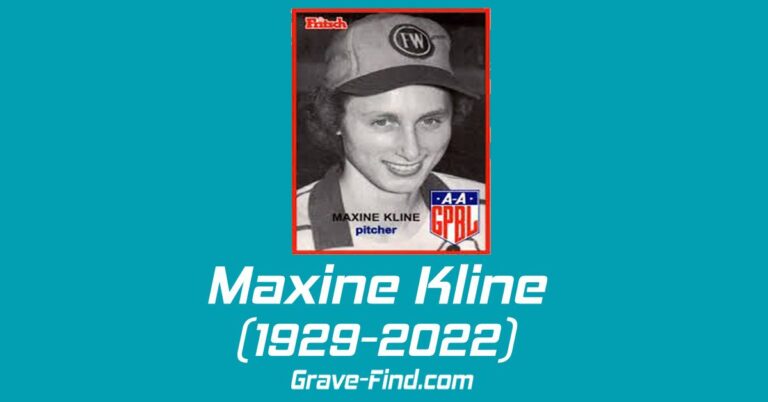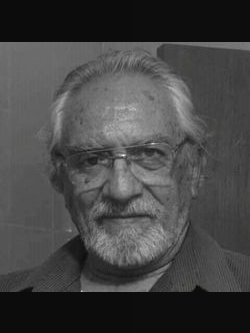Robert H. Grubbs (1942-2021) American Chemist
Robert H. Grubbs (1942-2021) American Chemist dies at 19 December 2021
| Name | Robert Howard Grubbs |
| Age | 79 Years |
| Birth | 27 February 1942 |
| Birthplace | Marshall County, Kentucky, United States |
| Death | 19 December 2021 |
| Spouse | Helen Grubbs |
| Awards | Nobel Prize in Chemistry, Franklin Medal, Benjamin Franklin Medal in Chemistry |
| Burial | Burial Details Unknown |
| Nationality | American |
Robert H. Grubbs American Chemist (1942-2021)
Nobel Laureate Scientist. He, along with fellow scientists Richard R. Schrock and Yves Chauvin, was awarded the 2005 Nobel Prize for Chemistry for their work in developing metathesis, an important type of chemical reaction used in organic chemistry. Both Schrock and him were honored for advancing the ideas that was first proposed by Chauvin.
He studied chemistry at both the University of Florida (B.S., 1963; M.S., 1965) and at Columbia University, New York City (Ph.D., 1968). After a year as a postdoctoral fellow at Stanford University, he joined the chemistry faculty at Michigan State University. In 1978 he moved to the California Institute of Technology, where he was named the Victor and Elizabeth Atkins Professor of Chemistry in 1990.
Building on fellow scientist Yves Chauvin’s work on metathesis, he took it further with his research and his discovery helped pave the way for practical applications of metathesis, including the development of new products such as advanced plastics and pharmaceuticals. It also contributed to the rise of “green chemistry,” which involves using techniques that minimize pollution in chemical processes. In 2005, he, along with Chauvin and fellow scientist Richard Schrock, was honored for their work with the Nobel Prize for Chemistry. He also received numerous other scientific honors and awards during his career.
Early life and education
Grubbs was born on February 27, 1942, on a farm in Marshall County, Kentucky, midway between Possum Trot and Calvert City. His parents were Howard and Faye (Atwood) Grubbs. Faye was a schoolteacher. After serving in World War II, the family moved to Paducah, Kentucky, where Howard trained as a diesel mechanic, and Robert attended Paducah Tilghman High School.
At the University of Florida, Grubbs initially intended to study agriculture chemistry. However, he was convinced by professor Merle A. Battiste to switch to organic chemistry. Working with Battiste, he became interested in how chemical reactions occur. He received his B.S. in 1963 and M.S. in 1965 from the University of Florida.
Next, Grubbs attended Columbia University, where he worked with Ronald Breslow on organometallic compounds which contain carbon-metal bonds. Grubbs received his PhD in 1968.
[bg_collapse view=”link-list” color=”029FB2″ expand_text=”Full Bio ” collapse_text=”Full Bio” ]
Career
Grubbs worked with James Collman at Stanford University as a National Institutes of Health fellow during 1968–1969. With Collman, he began to systematically investigate catalytic processes in organometallic chemistry, a then relatively new area of research.
In 1969, Grubbs was appointed to the faculty of Michigan State University, where he began his work on olefin metathesis. Harold Hart, Gerasimos J. Karabatsos, Gene LeGoff, Don Farnum, Bill Reusch and Pete Wagner served as his early mentors at MSU. Grubbs was an assistant professor from 1969 to 1973, and an associate professor from 1973 to 1978. He received a Sloan Fellowship for 1974–1976. In 1975, he went to the Max Planck Institute for Coal Research in Mülheim, Germany on a fellowship from the Alexander von Humboldt Foundation.
In 1978, Grubbs moved to California Institute of Technology as a professor of chemistry. As of 1990 he became the Victor and Elizabeth Atkins Professor of Chemistry.
As of 2021, Grubbs has an h-index of 160 according to Google Scholar and of 137 according to Scopus.
Commercial activities
Both first and second generation Grubbs catalysts were commercially available from Materia, a startup company that Grubbs co-founded with Mike Giardello in Pasadena, California, in 1998. Materia has been able to obtain exclusive rights to manufacture many of the known olefin catalysts. Under Giardello, Materia was able to sell their catalysts through Sigma-Aldrich‘s chemicals catalogue. Sigma-Aldrich became their exclusive worldwide provider. In 2008, Materia partnered with Cargill to form Elevance Renewable Sciences to produce specialty chemicals from renewable oils, including biofuels. In 2017, Materia sold its catalyst business to Umicore. In 2021, Materia was acquired by ExxonMobil.
Grubbs was a member of the Reliance Innovation Council formed by Reliance Industries Limited, India.
Grubbs was a member of the USA Science and Engineering Festival’s Advisory Board.
Research
Grubbs’s main research interests were in organometallic chemistry and synthetic chemistry, particularly the development of novel catalysts for olefin metathesis. In olefin metathesis, a catalyst is used to break the bonds of carbon molecules, which can then re-form to create chemical bonds in new ways, producing new compounds with unique properties. The basic technique can be used for creation of polymers, pharmaceuticals and petrochemicals and has broad applications in areas including pharmaceuticals, biotechnology, agriculture, and plastics.
Grubbs was instrumental in developing a family of ruthenium catalysts, including Grubbs catalyst for olefin metathesis. He studied olefin transformations for ring-closing metathesis (RCM), cross-metathesis reaction (CMR), and ring-opening metathesis polymerization (ROMP) with cyclic olefins such as norbornene. He also contributed to the development of “living polymerization”, in which the termination ability of a polymerization reaction is removed. The polymer will continue to replicate until a quenching agent is presented.
The Grubbs group successfully polymerized the 7-oxo norbornene derivative using ruthenium trichloride, osmium trichloride as well as tungsten alkylidenes. They identified a Ru(II) carbene as an effective metal center and in 1992 published the first well-defined, ruthenium-based olefin metathesis catalyst, (PPh3)2Cl2Ru=CHCH=CPh2.
The corresponding tricyclohexylphosphine complex (PCy3)2Cl2Ru=CHCH=CPh2 was also shown to be active. This work culminated in the now commercially available first-generation Grubbs catalyst in 1995. Second generation catalysts were developed as well.
Ruthenium is stable in air and has higher selectivity and lower reactivity than molybdenum, the most promising of the previously discovered catalysts. In addition, Grubbs took a green chemistry approach to catalysis that reduced the potential to create hazardous waste. The Grubbs catalyst has become a standard for general metathesis applications in ordinary laboratories.
By controlling the catalyst used, it became possible to synthesize polymers with specialized structures and functional capabilities, including cyclic olefins, alternating copolymers, and multiblock copolymers. Using catalysts allows chemists to speed up chemical transformations and to lower the cost of what were previously complicated multi-step industrial processes.
Personal life and Death
While at Columbia University, Grubbs also met his future wife, Helen O’Kane, a special-education teacher, with whom he had three children: Barney (born 1972), Brendan H. (born 1974) and Kathleen (Katy) (born 1977).
Grubbs died from a heart attack at the City of Hope Comprehensive Cancer Center in Duarte, California on December 19, 2021, at age 79. At the time of his death, he was being treated for lymphoma.
[/bg_collapse]







